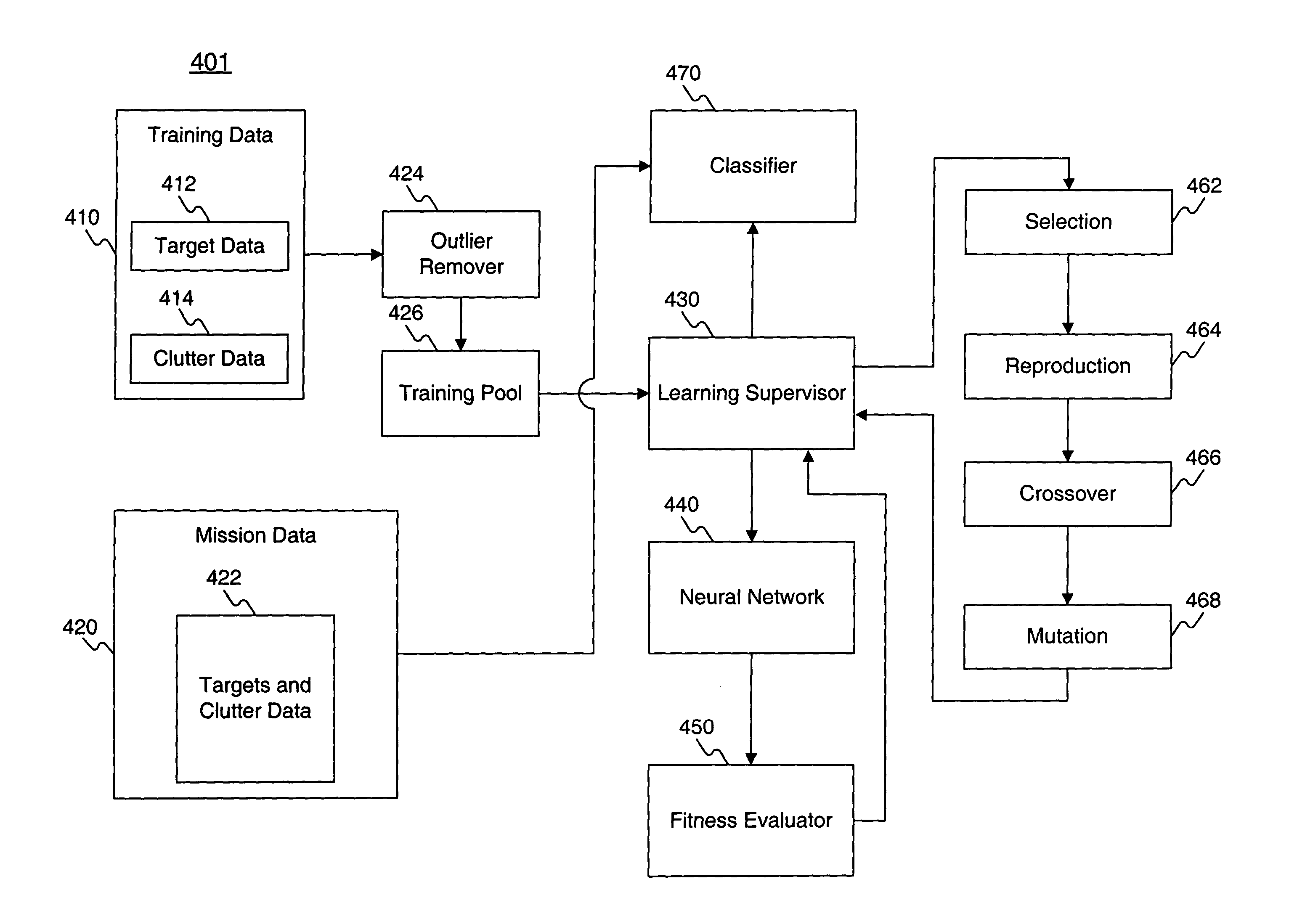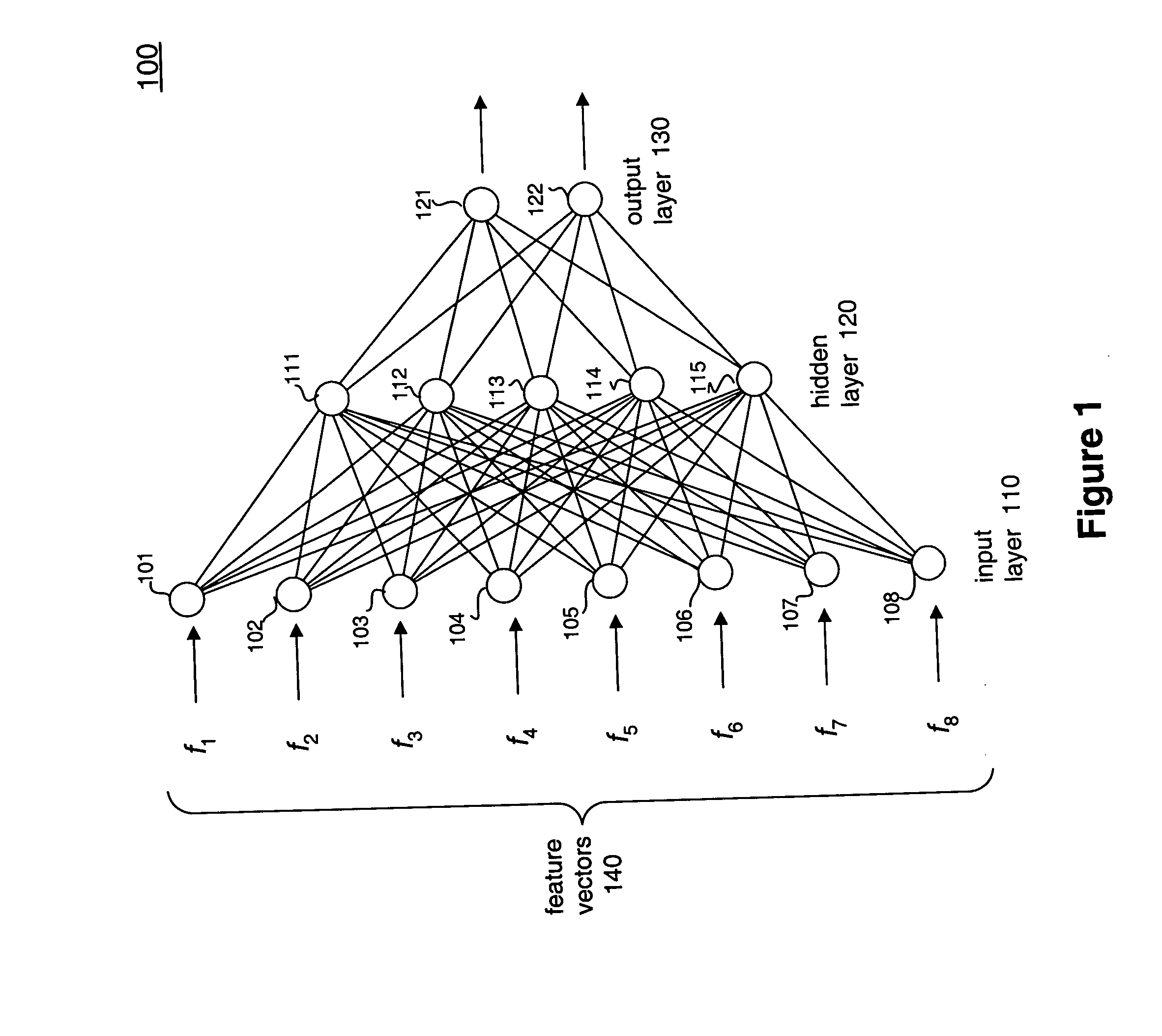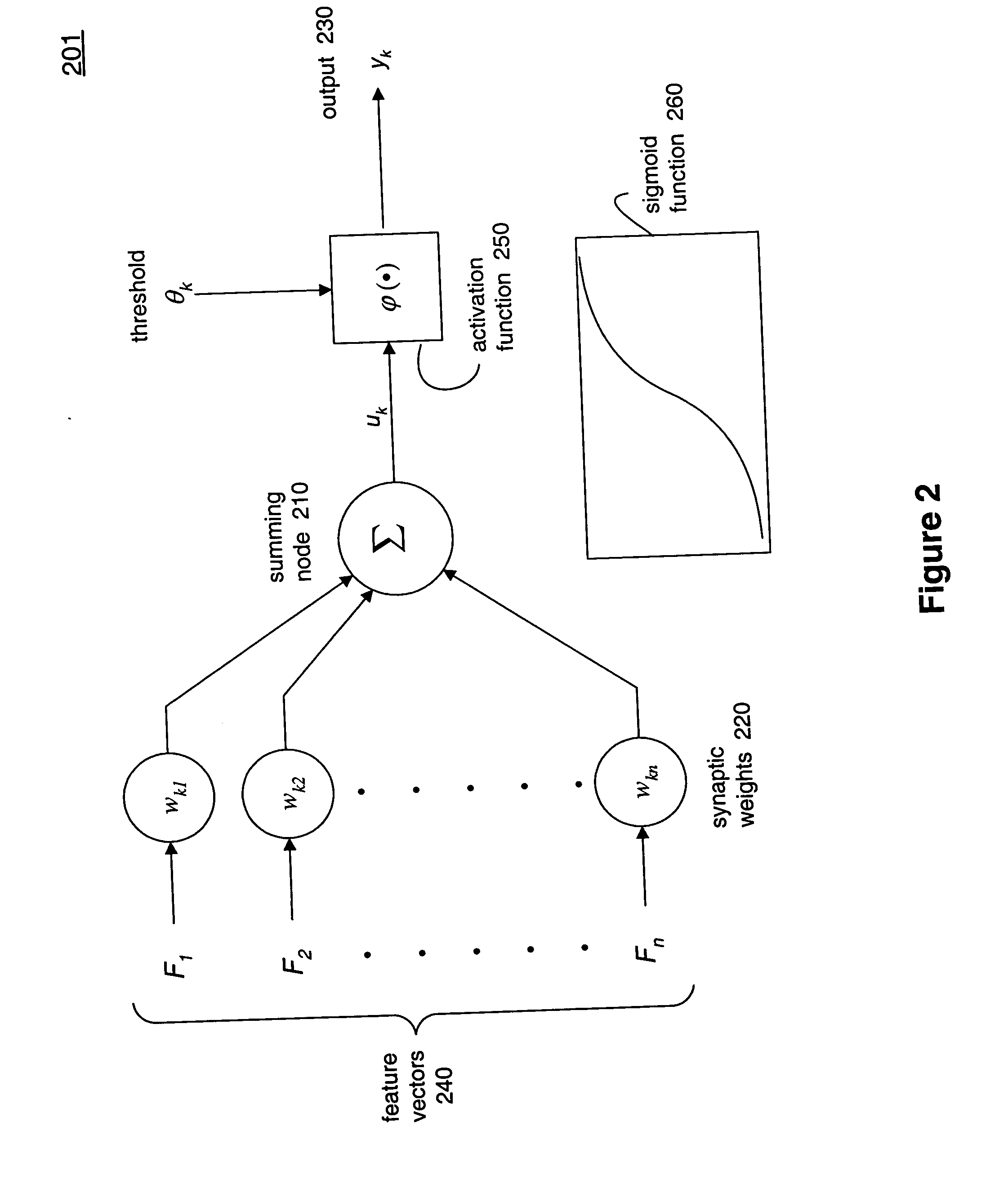Genetically adaptive neural network classification systems and methods
a neural network and classification system technology, applied in the field of genetically adaptive neural network signal classification systems and methods, can solve the problems of inaccurate signal classification, difficult, if not impossible, to predict for a particular environment, and the statistical behavior of clutter with respect to detected features is difficult, if not impossible, to improve the classification performance of sonar energy detections
- Summary
- Abstract
- Description
- Claims
- Application Information
AI Technical Summary
Problems solved by technology
Method used
Image
Examples
Embodiment Construction
The following paragraphs describe embodiments consistent with the present invention. Wherever possible, the same reference numbers in different drawings refer to the same or like parts. Unless specified otherwise, the specific implementation details are not critical.
Systems and methods consistent with the present invention can provide several advantages, such as improved accuracy in target detection over neural network classifiers using traditional approaches.
One may train a neural network to arrive at a set of weights that will yield accurate results for real world signal classification. During a real world mission in which a vessel, such as a submarine, uses sonar, signal waveforms propagate through water and reflect back to the vessel after contacting a surface. The returning sonar waveform is often referred to as a “ping.” Training of a neural network can occur in-situ and at the start of a multi-static active sonar mission. Such training can use a set of data comprising ar...
PUM
 Login to View More
Login to View More Abstract
Description
Claims
Application Information
 Login to View More
Login to View More - R&D
- Intellectual Property
- Life Sciences
- Materials
- Tech Scout
- Unparalleled Data Quality
- Higher Quality Content
- 60% Fewer Hallucinations
Browse by: Latest US Patents, China's latest patents, Technical Efficacy Thesaurus, Application Domain, Technology Topic, Popular Technical Reports.
© 2025 PatSnap. All rights reserved.Legal|Privacy policy|Modern Slavery Act Transparency Statement|Sitemap|About US| Contact US: help@patsnap.com



